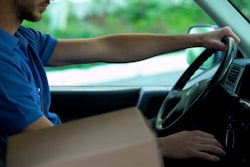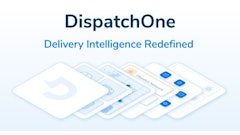
A lot can happen in 30 years. Back in 1992, commerce meant ordering from a Sears and Roebuck catalog, a very tedious process. Today, it takes one click on your mobile device. But despite the huge advances in how we buy and pay, the way goods are delivered hasn't evolved at the same pace.
For a long time, commerce has been merchant-centric. Businesses have been primarily concerned with making a sale and securing payment, and not so much how (and how fast) the items get to customers. There has also been ongoing tension around who pays for delivery costs. Customers feel like the cost of delivery should be included in the purchase transaction, but merchants don't want to take a slice out of their margins. As a result, the price of delivery has long been a point of contention and slowed improvements in the last mile.
But fast-forward to 2022: e-commerce competition is rife, instant delivery is booming, and merchants can no longer afford to take a hands-off attitude to delivery. Furthermore, research from McKinsey shows that people expect items to arrive no later than the day after they order.
Delivery has 30 years worth of development to catch up on. There are three critical pillars we believe can solve last mile's legacy issues.
Data: collect and analyze data to establish predictive patterns and improve productivity
Getting better data - and more of it - can help businesses satisfy their customers faster, as well as increase productivity. The more information companies have around routes, delays, driver performance, customers and connectivity between warehouses, transporters, and recipients, the more easily they can spot and reduce friction, and ensure that instant delivery is a cost-effective norm.
With data, delivery companies can navigate demand spikes and match supply accordingly, ensuring more vehicles and drivers are available ahead of those moments. They can also factor in weather, road, and vehicle conditions, as well as better map areas that may not have clear routes on standard GPS tools - especially in emerging markets where addresses are not always accurate.
Not to mention, with the appropriate data delivery, companies can know what time of the day customers are most likely to be home and accept a package, which will reduce the likelihood of returns. The longer customers have to wait to receive their goods, the higher the chance that they'll send it back because they've had more opportunity to hesitate about their purchase.
Collecting and analyzing data is very important, but being able to get live data feeds and distribute them to the stakeholders in the ecosystem in real time is also critical to improving speed and cost.
Tech: implement a mobile strategy to distribute live data faster and integrate as much as possible with third party stakeholders
The delivery sector is by nature mobile and therefore a mobile strategy is essential. With a mobile-first strategy, smartphones, tablets, and apps are the main vector to speed up deliveries and distribute live data feeds on drivers, customers or parcels. Already, over half of transport and logistics professionals have said that a mobile-first strategy allowed them to bolster visibility into their supply chain.
We live in an era where more than 83% of the global population has a smartphone, meaning real-time data around geolocation, timing, and general productivity can be garnered directly from teams' pockets. With an abundance of mobile data readily available, companies can apply machine learning to more accurately track and correct operations. And decentralized, live data feeds powered by mobile technology are enabling new business models with higher productivity.
For example, different industries require different delivery vehicles, and different delivery speeds - most people would anticipate that their groceries arrive faster than a book they buy online. With mobile and real-time data, delivery companies have a clear overview to assign resources to higher priority deliveries or combine deliveries in the same neighborhood in the most cost-effective way.
And, because the majority of mobile solutions are interoperable, companies can now leverage one another's tools and databases via only a mobile device, and can carry out more informed business activities on-the-go.
Business model: share resources to be more cost effective and encourage eco-friendly behavior
Logistics companies have traditionally been asset heavy - they own their own trucks, warehouses, and have dedicated teams. Yet, with this model, they have to keep paying for these resources during low seasons, which can quickly become expensive. Furthermore, it stops them from adapting very quickly to changes in supply or demand patterns.
A smarter alternative is to share assets with others (also known as being "asset light") in order to reduce fixed costs and become more flexible. The emergence of mobile and data-driven technologies is empowering these innovative asset light models.
Sharing resources like warehouses, drivers, and vehicles means less wasteful emissions. Businesses also spend less on resources that aren't being used, and companies can collaborate more efficiently. By tapping into each other’s resources, companies can gain wider coverage than acting independently. They can improve their cost structure through enhanced productivity and overall, improve the end customer's experience of their brand.
Asset light models also factor sustainability into the last mile by pooling resources - which aligns with the public's call for greener business operations. Last mile supply chains using shared local fulfillment centers could reduce emissions in the sector by up to 26% by 2025.
Over the past 30 years, consumers have benefited from monumental changes in commerce that have enabled one click purchases and payments on the go. Now, it’s time for the last mile to catch up.
![Pros To Know 2026 [color]](https://img.sdcexec.com/mindful/acbm/workspaces/default/uploads/2025/08/prostoknow-2026-color.mduFvhpgMk.png?auto=format%2Ccompress&bg=fff&fill-color=fff&fit=fill&h=100&q=70&w=100)








![Pros To Know 2026 [color]](https://img.sdcexec.com/mindful/acbm/workspaces/default/uploads/2025/08/prostoknow-2026-color.mduFvhpgMk.png?ar=16%3A9&auto=format%2Ccompress&bg=fff&fill-color=fff&fit=fill&h=135&q=70&w=240)








